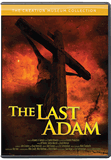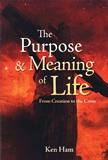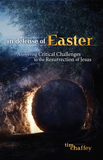
Is the Name “Easter” of Pagan Origin?
Misconception: The church borrowed the name Easter from pagans.
The modern controversy over the name Easter, when used in association with the celebration of the Resurrection of Jesus, is interesting, to say the least.
The modern controversy over the name Easter, when used in association with the celebration of the Resurrection of Jesus, is interesting, to say the least. The controversy seems to have blossomed at the beginning of the twentieth century and has caused many disturbances through the years. Examining this question is important to many Christians who do not wish to mix the worship of false gods with their worship of the only true God.
As discussed in the previous article, the date of Easter has been claimed to follow pagan feasts. However, this claim falls flat when examined against the record of history. The name and symbols used in the celebration of the Resurrection have faced similar claims, and we should examine these with the same rigor.
The Claims of Pagan Origin
According to various sources, the name Easter has its origin with a goddess of the Anglo-Saxons named Eostre (also Estre, Estara, Eastre, Ostara, and similar spellings in various sources). It is believed that she is the goddess of the dawn and was worshipped in the spring by pagans in Northern Europe and the British Isles. In The Two Babylons, Alexander Hislop claimed Eostre is actually a name derived from the Babylonian goddess Astarte. Hislop extended this connection to include goddesses from around the world: Ishtar, Ashtoreth, Venus, and others. In fact, Hislop argued that all of the systems of gods and goddesses find their origin with Nimrod and his wife Semiramis at the Tower of Babel. Thus, every primary god is a figure of Nimrod, and every primary goddess is a figure of Semiramis.
Similar claims are made by Ralph Woodrow in his 1966 book Babylon Mystery Religion, but Woodrow drew heavily on Hislop’s work to support his claims. The thesis of each of these books is to connect the modern practices of the Roman Catholic Church to the idolatrous worship of various gods. While many of the claims in the books are sound, the connection of Eostre to these other goddesses is tenuous at best.
To those who have used Woodrow’s early work, please note that he has changed his position on many of the conclusions in the book. Woodrow has stopped circulating his early work and replaced it with an updated title The Babylon Connection? To demonstrate some of the false conclusions concerning pagan connections proposed by Hislop, Woodrow explains:
By this method, one could take virtually anything and do the same—even the “golden arches” at McDonald’s! The Encyclopedia Americana (article: “Arch") says the use of arches was known in Babylon as early as 2020 B.C. Since Babylon was called “the golden city” (Isa. 14:4), can there be any doubt about the origin of the golden arches? As silly as this is, this is the type of proof that has been offered over and over about pagan origins.1
Hislop’s logic becomes incomprehensible in places, and he made fundamental errors demonstrating his thinking to be false. For instance, he argued on a phonetic basis that Eostre from Saxony must be the same as Astarte, Ishtar, and Ashtoreth. This is a leap to consider their relationships based on the sound of the names alone. We might find many examples of words that sound the same in various languages but share no common root or meaning. Hislop attempted to make other connections, but they are unconvincing and do not take into consideration the time these goddesses were worshipped or the importance of the confusion of languages at Babel. He also neglected to consider the relationship between the English and German words used today.
There remains only one written record of a goddess who might be connected to Eostre of the Saxons. The church scholar Bede,2 who lived in modern-day England from AD 673–735, recorded the names of several of the goddesses worshipped by early Saxons. He identified Eostre as one whose festivals were celebrated in the month given her name.
Eosturmanath has a name which is now translated “Paschal month,” and which was once called after a goddess of theirs named Eostre, in whose honour feasts were celebrated in that month. Now they designate that Paschal season by her name, calling the joys of the new rite by the time-honoured name of the old observance.3
Bede’s description was tentatively confirmed in the nineteenth century by Jacob Grimm. Grimm was a linguist of the highest caliber who studied and preserved the histories, languages, and traditions of the Germanic peoples, also called Teutonic in older literature. This would include the Franks, Saxons, Angles, Slavs, Vandals, Goths, and others. These groups would have shared a common language family, and Grimm traced the connections among many of their gods and goddesses in his writings. Bede is discussed in the work Teutonic Mythology, first published in 1835.
The two goddesses, whom Beda (De temporum ratione cap. 13) cites very briefly, without any description, merely to explain the months named after them, are Hrede and Eâstre, March taking its Saxon name from the first, and April from the second. It would be uncritical to saddle this father of the church, who everywhere keeps heathenism at a distance, and tells us less of it than he knows, with the invention of these goddesses.
We Germans to this day call April ostermonat, and ostarmânoth is found as early as Eginhart [c. 800] ([contemporary of Charlemagne]). The great christian festival, which usually falls in April or the end of March, bears in the oldest of [Old High German] remains the name ôstarâ; it is mostly found in the plural, because two days (ôstartagâ, aostortagâ, Diut. 1, 266) were kept at Easter. This Ostrâ, like the [Anglo Saxon] Eâstre, must in the heathen religion have denoted a higher being, whose worship was so firmly rooted, that the christian teachers tolerated the name, and applied it to one of their own grandest anniversaries. All the nations bordering on us have retained the Biblical “pascha;” even Ulphilas writes paska, not austro, though he must have known the word; the Norse tongue also has imported its paskir, Swed[ish] pask, Dan[ish] paaske. The [Old High German] adv. ôstar expresses movement toward the rising sun (Gramm. 3, 205), likewise the [Old Norse] austr, and probably an [Anglo Saxon] eástor and Goth[ic] áustr.4 (Italics in original)
Some scholars have called Eostre an invention of Bede and discount the connections, but the confirmation of Grimm cannot be easily discredited; nor does the quality of Bede’s other works lead us to disbelieve him. Grimm established a clear connection between the Anglo-Saxon Eâstre and the German Ostrâ. Similar connections are found in etymologies that describe the origin of Easter from many sources. Ester and oster, the early English and German words, both have their root in aus, which means east, shine, and dawn in various forms.5 These names may have developed independent of the name of the goddess as a reference to the Easter festivals, or they may have been related to her name in some way.
Could There Be Another Origin of the Name Easter?
Contrary to suggesting a connection to a Saxon goddess, some have suggested Easter finds its root in the German word for resurrection—auferstehung. In a footnote to his translation of the work of Eusebius, Christian F. Cruse defended the usage of the word Easter:
Our English word Passover, happily, in sound and sense, almost corresponds to the Hebrew [pesach], of which is a translation. Exod. Xii. 27. The Greek pascha, formed from the Hebrew, is the name of the Jewish festival, applied invariably in the primitive church to designate the festival of the Lord’s resurrection, which took place at the time of the passover. Our word Easter is of Saxon origin, and of precisely the same import with its German cognate Ostern. The latter is derived from the old Teutonic form of auferstehn, Auferstehung, i. e. resurrection. The name Easter is undoubtedly preferable to pascha or passover, but the latter was the primitive name.6
Nick Sayers argued along these lines to suggest that the origin of Easter in English comes from the German:
Because the English Anglo/Saxon language originally derived from the Germanic, there are many similarities between German and English. Many English writers have referred to the German language as the "Mother Tongue!" The English word Easter is of German/Saxon origin and not Babylonian as Alexander Hislop falsely claimed. The German equivalent is Oster. Oster (Ostern being the modern day equivalent) is related to Ost which means the rising of the sun, or simply in English, east. Oster comes from the old Teutonic form of auferstehen / auferstehung, which means resurrection, which in the older Teutonic form comes from two words, Ester meaning first, and stehen meaning to stand. These two words combine to form erstehen which is an old German form of auferstehen, the modern day German word for resurrection.7 (Italics in original)
In the Hebrew, Passover is Pesach. The Greek form is simply a transliteration8 and takes the form Pascha. Virtually all languages refer to Easter as either a transliterated form of pascha or use resurrection in the name. English and German stand apart in their use of Easter (Ostern) to refer to the celebration of the Resurrection.
| Form of pascha | Resurrection Day/Feast | Great Day/Night |
|---|---|---|
| Bulgarian—Paskha | Serbian—Uskrs or Vaskrs | Slovak—Veľká Noc |
| Dutch—Pasen | Chinese—Fùhuó Jié | Ukrainian—Velykden |
| Italian—Pasqua | Korean—Buhwalchol | Polish—Wielkanoc |
| Finnish—Pääsiäinen | Vietnamese—Lễ Phục Sinh | |
| Indonesian—Paskah | ||
| Portuguese—Páscoa |
We should also consider the early translations by German and English scholars in this examination. John Wycliffe was the earliest translator to publish a complete New Testament in English (1382), though he did his translation from the Latin Vulgate. Wycliffe transliterated the word pascha to pask, rather than translating it. When Martin Luther translated the Bible into German (New Testament in 1522), he chose the word Oster to refer to the Passover references before and after the Resurrection.
William Tyndale translated the Bible into English from the Greek and Hebrew. His New Testament (1525) uses the word ester to refer to the Passover. In fact, we owe our English word Passover to Tyndale. When translating the Old Testament (1530), he coined the term to describe how the Lord would “pass over” the houses marked with the blood of the lamb (Exodus 12). The usage of ester was retained in the 1534 revision of the New Testament, and it was not until later that it was known as Easter, adding the a. Luther and Tyndale were the first to use a translation of pascha rather than a transliteration.9
The following are comparisons of the early translations by Wycliffe, Luther, Tyndale, and the translators of the 1611 King James Version (KJV), demonstrating the handling of pascha.
Luke 2:41—This passage refers to a Passover festival before the Resurrection, using pascha (πάσχα).
Wycliffe—And his fadir and modir wenten ech yeer in to Jerusalem, in the solempne dai of pask.
Luther—Und seine Eltern gingen alle Jahre gen Jerusalem auf das Osterfest.
Tyndale—And his father and mother went to Hierusalem every yeare at the feeste of ester.
KJV—Now his parents went to Jerusalem every year at the feast of the passover.
Acts 12:4—This passage refers to a Passover festival after the Resurrection, using pascha (πάσχα).
Wycliffe—And whanne he hadde cauyte Petre, he sente hym in to prisoun; and bitook to foure quaternyouns of knyytis, to kepe hym, and wolde aftir pask bringe hym forth to the puple.
Luther—Da er ihn nun griff, legte er ihn ins Gefängnis und überantwortete ihn vier Rotten, je von vier Kriegsknechten, ihn zu bewahren, und gedachte, ihn nach Oster dem Volk vorzustellen.
Tyndale—And when he had caught him he put him in preson and delyvered him to .iiii. quaternios of soudiers to be kepte entendynge after ester to brynge him forth to the people.
KJV—And when he had apprehended him, he put him in prison, and delivered him to four quaternions of soldiers to keep him; intending after Easter to bring him forth to the people.
1 Corinthians 5:7—This passage refers to Christ as the sacrificial Passover lamb, using pascha (πάσχα).
Wycliffe— . . . For Crist offrid is oure pask.
Luther— . . . Denn wir haben auch ein Osterlamm, das ist Christus, für uns geopfert.
Tyndale— . . . For Christ oure esterlambe is offered up for us.
KJV— . . . For even Christ our passover is sacrificed for us.
It would seem from the translations of Luther and Tyndale that by 1500, the word oster/ester simply referred to the time of the Passover feast and had no association with the pagan goddess Eostre. Even if the word had an origin in her name, the usage had changed to such a degree that Luther was comfortable referring to Christ as the Osterlamm. On the other hand, Cruse’s Resurrection etymology is also consistent with this passage, and Luther referred to Christ as the “Resurrection lamb.” Likewise, Tyndale was comfortable referring to Christ as the esterlambe.
To suggest these men thought of their Savior in terms of the sacrificial offering of a pagan goddess is quite absurd in light of their writings and translations of other portions of Scripture. Even the translators of the KJV, who relied heavily on Tyndale’s work, chose to use Easter in the post-Resurrection context of Acts 12:4. Using a word that means resurrection would not make sense to describe the Passover festivals prior to the Resurrection of Christ. However, Luther still used oster consistently in his New Testament.
Could the Meaning of Easter Have Changed over the Centuries?
It must not be forgotten that the meanings of words change over time. This can be demonstrated by a multitude of examples. However, even if the name we now use to refer to Christ’s Resurrection was connected to a goddess some 1,400 years ago, it does not bear that connection today. An analogy might be drawn to our current calendar system. We use the term Sunday to refer to the day on which Christ rose from the dead with no hint of applying worship of the sun or its associated deities. We refer to the Fourth of July, a colloquial term for Independence Day in the US, with no connotation of the tyrannical emperor for whom the month is named (Julius Caesar). The testimony of Luther and Tyndale in applying the names “Osterlamm” and ”esterlambe” to Christ as the sacrificial Lamb that brings us peace with God seems to be a compelling argument that, even 500 years ago, Easter had no association with pagan worship.
However, if the word Easter used to refer to the Resurrection, it no longer seems to carry that understanding in the minds of many today. This may be the result of the suggestion from Hislop and others, including virtually all published etymologies of the word, which promote the idea that the name comes from the goddess Eostre.
Conclusion
In an attempt to honor God, many have desired to move away from the term Easter, using Resurrection Day in its place. What could be more fitting or clearer than to simply refer to the day on which we celebrate the risen Lord as Resurrection Day? I can think of no better solution to this topic, but I am aware that many Christians will continue to use the term Easter with a clear conscience. I trust that as this topic is discussed, Christians will seek to keep their focus on the fact that they serve the resurrected Christ—one who has conquered death on their behalf. This reality is what we celebrate on Easter . . . I mean, Resurrection Day.
Footnotes
- Ralph Woodrow, “Message from Ralph Woodrow Regarding the Book Babylon Mystery Religion,” Ralph Woodrow Evangelistic Association, http://www.ralphwoodrow.org/books/pages/babylon-mystery.html. See all footnotes
- His name is also rendered as Beda and Bede the Venerable in various sources. See all footnotes
- Bede: The Reckoning of Time, trans. Faith Wallis, vol. 29, Translated Texts for Historians (Liverpool: Liverpool Univ. Press, 1999), 54. See all footnotes
- Jacob Grimm, Teutonic Mythology, vol. 1, 4th ed., trans. James Steven Stallybrass (George Bell and Sons, 1882), 289–291. See all footnotes
- An Etymological Dictionary of the English Language, 2nd ed., s.v. “Easter.” (Walter W. Skeat, 1893). See all footnotes
- Eusebius of Caesarea, An Ecclesiastical History to the Twentieth Year of the Reign of Constantine, 4th ed., trans. Christian F. Cruse (London: Oxford Univ. Press, 1847), 221. See all footnotes
- Nick Sayers, “Why We Should Not Passover Easter,” http://www.easterau.com. See all footnotes
- Transliteration occurs when the word does not have a direct equivalent, and so the basic phonetic structure of the word is used. In English, we pronounce the s in Paris, and a multitude of other words have been borrowed from other languages with little or no modification. Many Greek words have been transliterated rather than translated into the English vocabulary of the church: deacon from diakonos; presbyter from presbuteros; evangelism from euaggelizo. See all footnotes
- Though I do not necessarily agree with all of his conclusions, a more thorough explanation of these ideas can be found in: Sayers, “Why We Should Not Passover Easter.” See all footnotes
Recommended Resources

Answers in Genesis is an apologetics ministry, dedicated to helping Christians defend their faith and proclaim the good news of Jesus Christ.
- Customer Service 800.778.3390
- © 2025 Answers in Genesis






